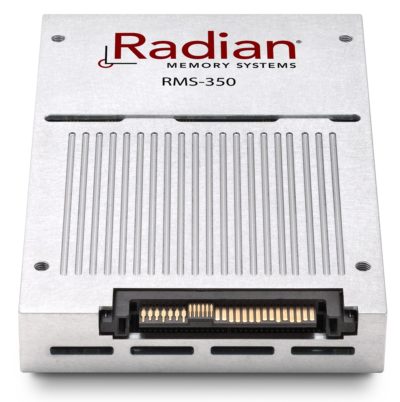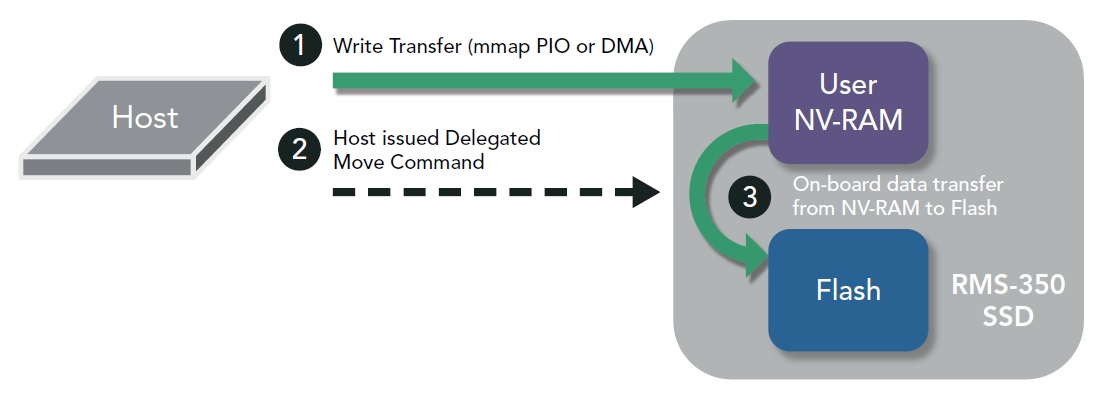RMS-350
• Flash Capacity: 4TB, 8TB, or 16TB
• PMR style User NV-RAM: 4GB or 12GB
• User NV-RAM access modes:
NVMe or byte addressable (dword)
• NVMe PCIe x4 Gen3 interface
• 2.5” U.2 SSD Drive form factor
• Dual Port 2×2 or Single Port x4 mode
• Hot Plug, Live Insertion, Surprise Remove
• Cooperative Flash Management (CFM)
• DiaLog™ OEM Diagnostic Lifecycle Monitoring

RMS-350
16TB Flash
12GB User NV-RAM
U.2 NVMe PCIe Gen3
Dual Port or Single Port
By taking a system-driven approach to Flash storage, Radian has pioneered Cooperative Flash Management (CFM) technology as an alternative to traditional Flash Translation Layers (FTLs). Radian’s Symphonic™ CFM redistributes functionality and responsibilities between the host system and SSD. Built on the premise of operating in logical host address space, Symphonic leverages the intelligent segment cleaning and macro scheduling that many modern host software stacks are already performing.
This enables the host to control data placement and schedule processes such as garbage collection, but offloads process execution and lower level media management to the SSD.
Based upon Symphonic CFM technology, the RMS-350 SSD is available in configurations for either Zoned Namespaces (ZNS), the original Symphonic API, or an Open-Channel 2* compliant interface.
RMS-350 Architectural Advantages
- Optimal for tiering different classes of memory storage media
- DMA engine improves system performance and offloads host resources
- Scale NV-RAM and Flash tiers proportionately as SSDs are added to the system
- Delegated Move capability reduces traffic across the system bus and host overhead
- Device appears as a block device that supports DMA or byte addressable mmap PIO
- Simplifies low latency support of NVMe Direct, RDMA, or NVMe-over-Fabric implementations
The U.2 RMS-350 provides host systems with direct control over both its byte addressable User NV-RAM, high capacity Flash storage, and transferring data between the two medias. The example below illustrates how the RMS-350 enables a host to write data into its on-board NV-RAM, then issue a single Delegated Move command to transfer the data from NV-RAM to local Flash storage.

- 4TB, 8TB or 16TB TLC NAND Flash Capacity
- User NV-RAM: 4GB or 12GB
- NVMe PCIe x8 Gen3 interface
- U.2 NVMe PCIe Gen3
- Dual Port 2×2 or Single Port x4
- Symphonic™ CFM with Zoned Namespaces (ZNS), the original Symphonic API, or an Open-Channel 2* Flash Management mode
- Fault Tolerant Flush-to-Flash™ Backup System
- DuraLife™ Ultra-Capacitor Power Management System
- DiaLog™ OEM Diagnostic Lifecycle Monitoring
Advantages of User NV-RAM combined with High Capacity Flash
Advantages over NV-DIMMs
*Open-Channel Specification Revision 2.0, January 29, 2018
